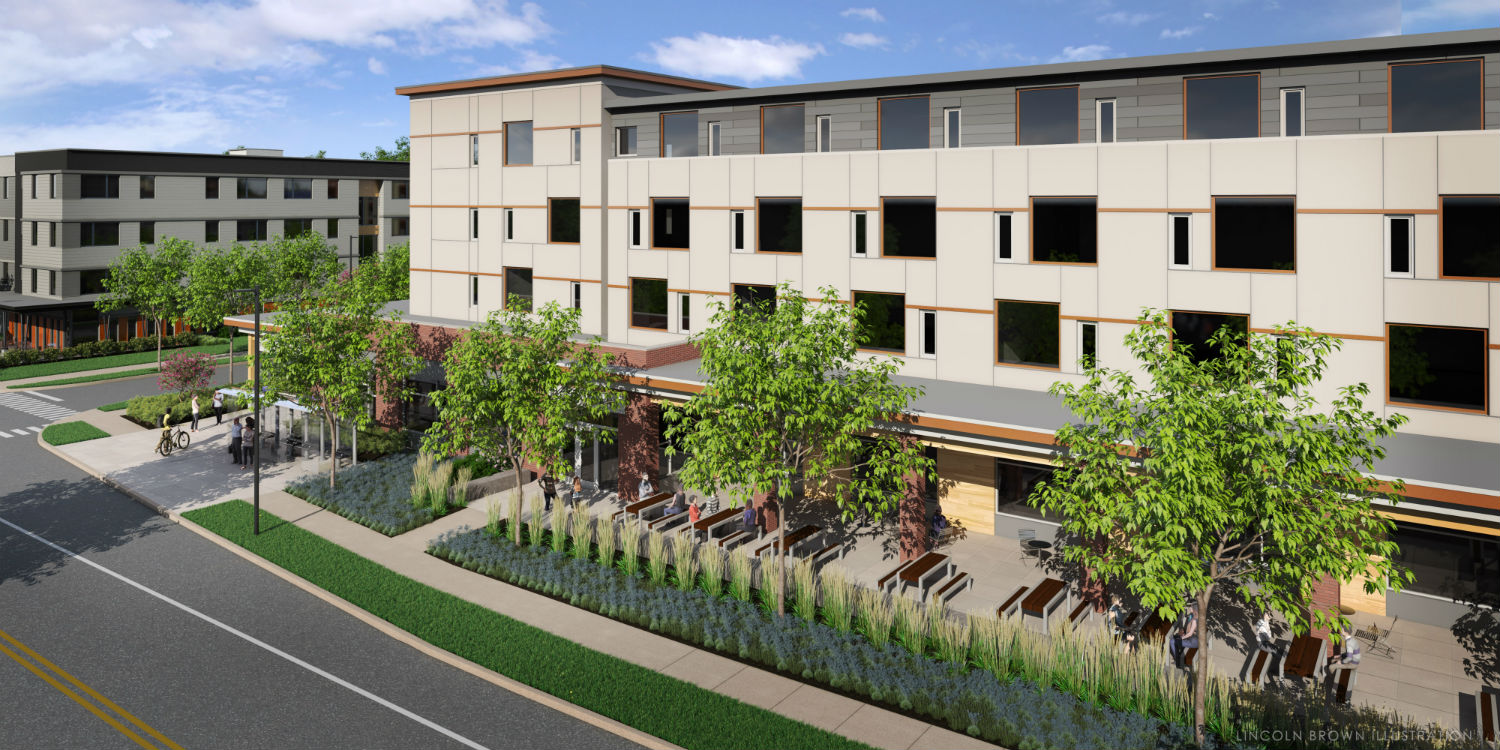A “mixed-use neighborhood” is defined by encompassing areas of a city or town that contain both housing and commercial/retail spaces.
They come in many scales – from mid-town Manhattan in New York City, to Main Street in Vergennes, Bristol, or Montpelier here in Vermont – and are commonly found all over the country.
They are easily differentiated from single-use neighborhoods because they are generally active for more hours of the day and, for that reason, maintain a dynamic feeling for a large portion of the day. Because of this dynamism, they are more than just commercial/retail uses proximate to housing because a housing subdivision may also be proximate to a shopping plaza.
In a mixed-use neighborhood, housing and commercial/retail are more seamlessly integrated and economic forces usually determine which businesses will survive. It’s not uncommon to find restaurants, cafes, dry cleaners, supermarkets, hardware stores, etc. – businesses that serve the local population and support the daily needs of residents. These neighborhoods offer an important lifestyle option for people who don’t have a need to live in the suburbs or in places that are dedicated to residential uses only.
Live Where You Work, Play Where You Live
Flexibility and having options tend to be synonymous with mixed use neighborhoods – in terms of working, transportation, daily life. A person might work a short walk or bike ride from where they live. Or, they may choose to live above their workplace. A substantially diminished commute puts more time for other things back into each day, rather than excessive time wasted driving or sitting in traffic.
The mix of uses might allow for grocery shopping during a lunchbreak or the opportunity to run any number of errands at proximate businesses, allowing you more control over how you use your time. The vibrant nature of mixed use neighborhoods comes from the fact that these areas are more active for more hours of the day – perhaps 18 hours rather than just a few hours in the morning and a few in the evening.
Studies show that the presence of more people and bustle can translate into safer streets, as people are less likely to commit crimes with so much activity happening around them. Good lighting and public infrastructure (including well-maintained sidewalks) are more easily supported by the mix of property taxes and sales/use taxes generated by these properties.
These areas are often highlighted or showcased by the towns themselves and targeted for festivals/events, holiday decorations, etc. Areas with strictly commercial uses are usually dead as soon as the workday ends and rush hour is over.
{{cta(‘fe5d61d8-7300-4a04-820a-f89d450149f6′,’justifycenter’)}}
Minimization of Your Carbon Footprint
Mixed use neighborhoods are usually more compact, with less sprawl. With density come benefits like new and exciting businesses and a lively street with a lot of visual interest – where residents no longer have to get into their car for every errand or social engagement. One positive externality to not needing a car is that – whether it’s a stated goal or not – the carbon footprint of the individual (and the city or town) is reduced. For that reason, many municipalities have created or supported zoning regulations that encourage mixed-use development.
A mixed-use community is also more like to be served by public transportation, as density is a prerequisite for trains and buses to run with any useful regularity. Car sharing and bike sharing as businesses have also developed as transportation options for residents of more densely populated areas. The ingenuity as to how to serve residents of more densely populated areas has evolved from mere delivery of food and packages to delivery of just about anything, food trucks, office-share spaces, etc.
In addition to lowering one’s carbon footprint, another unexpected benefit for a resident may be that their fitness level improves, as opportunities increase for mobility and more places exist within walking or biking distance.
Connect with your Surroundings
A person who drives usually experiences the world at no less than 25mph – and attention (rightly so) needs to be focused on the road. People may find out more about their neighborhood as they walk, bike or take public transportation. It’s easier to notice fliers of events and happenings – it’s also easier to stop, spur of the moment, into local venues.

Making purchases in mixed –use neighborhood environment is often a transaction with a local business and/or local people. Through these exchanges – or even seeing neighbors at local stores and venues –the world becomes a smaller place. That is, it allows for human interaction that is almost impossible in a car. People in mixed-use environments may feel less of a sense of isolation as places abound to walk, drink a cup of coffee, buy a loaf of bread, etc. where one might see other people and/or interact with them, as opposed to staying cooped up in their house or apartment because there is nothing to do outside of it.
Conclusions
Mixed-use neighborhoods are not the ideal residence for everyone.
Mixing uses and density, in general, work best for individuals or families that are comfortable interacting with others and who don’t crave large tracts of personal space. Apartments (or even townhouses) usually have less square footage than single family homes and, while an apartment may come with a balcony or outdoor patio, dense environments don’t usually have large, open, personal areas where one might expect to be solitary.
That’s not to say that there aren’t somewhat proximate large, open spaces, but rather that these spaces are often shared amongst a group. There are trade-offs with being in a mixed-use neighborhood, but most advocates will tell you that they reap large rewards for the individual, family, city/town and environment that engages in or with them.